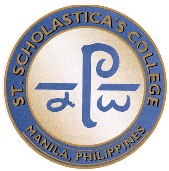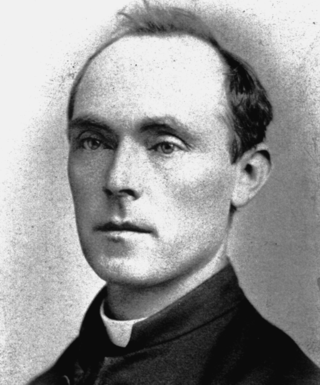
Benet Academy is a co-educational, college-preparatory, Benedictine high school in Lisle, Illinois, United States, overseen by the Diocese of Joliet. Founded in 1886, the school was initially established in Chicago as the all-boys St. Procopius College and Academy by Benedictine monks, who also operated the St. Joseph Bohemian Orphanage. In 1898, the orphanage moved to Lisle, about 25 miles (40 km) west of Chicago, to be joined by St. Procopius three years later. In 1926, Benedictine nuns constructed the all-girls Sacred Heart Academy near the orphanage and school in Lisle. The orphanage closed in 1956 to make room for St. Procopius Academy, which separated from the college in 1969. Due to rising costs and waning enrollment, Sacred Heart merged with St. Procopius Academy in 1967 to form Benet Academy on the St. Procopius campus. Since then, numerous building projects have been undertaken to expand Benet's athletics, music, and science programs.

The University of Minnesota Duluth (UMD) is a public university in Duluth, Minnesota. It is part of the University of Minnesota system and offers 17 bachelor's degrees in 87 majors, graduate programs in 24 different fields, and a two-year program at the School of Medicine and a four-year College of Pharmacy program.

Benedictine College is a private Benedictine liberal arts college in Atchison, Kansas, United States. It was established in 1971 by the merger of St. Benedict's College for men and Mount St. Scholastica College for women. It is located on bluffs overlooking the Missouri River, northwest of Kansas City, Missouri. Benedictine is one of a number of U.S. Benedictine colleges and is sponsored by St. Benedict's Abbey and Mount St. Scholastica Monastery. The abbey has a current population of 53 monks, while the Mount monastery numbers 147 community members. The college has built its core values around four "pillars" — Catholic, Benedictine, Liberal Arts, Residential — which support the Benedictine College mission to educate men and women in a community of faith and scholarship.

The Duluth MN–WI Metropolitan Area, commonly called the Twin Ports, is a small metropolitan area centered around the cities of Duluth, Minnesota and Superior, Wisconsin. The Twin Ports are located at the western part of Lake Superior and together are considered one of the larger cargo ports in the United States. The Twin Ports are close to many natural attractions such as the North Shore, the Apostle Islands, and the Superior National Forest.

Wesleyan College is a private, liberal arts women's college in Macon, Georgia, United States. Founded in 1836, Wesleyan was the first college in the world chartered to grant degrees to women. It opened in 1839, two years after the opening of Mount Holyoke College.
The University of Mary is a private, Benedictine university near Bismarck, North Dakota that has 3,852 students. It was established in 1959 as Mary College.

Indiana University South Bend is a public university in South Bend, Indiana. It is the third largest and northernmost campus of Indiana University.
Georgia Southern University–Armstrong Campus, formerly Armstrong State University, is one of three campuses of Georgia Southern University, a public university in the U.S. state of Georgia. Occupying a 268-acre (1.08 km2) area on the residential southside of Savannah, Georgia, the school became one of three campuses of Georgia Southern University in 2018. The university's flagship campus is in Statesboro, 50 miles (80 km) west of Savannah. The Armstrong campus is located approximately 15 miles (24 km) from downtown Savannah and 25 miles (40 km) from Tybee Island. Armstrong offers undergraduate and graduate degrees; it has a total student enrollment of approximately 5,000 students.

Belmont Abbey College is a private, Roman Catholic liberal arts college in Belmont, North Carolina. It was founded in 1876 by the Benedictine monks of Belmont Abbey. The college is affiliated with the Catholic Church and the Order of Saint Benedict. Belmont Abbey is the only college in North Carolina affiliated with the Catholic Church.

Lake Superior College (LSC) is a public community college in Duluth, Minnesota. The college offers pre-baccalaureate majors for students interested in transferring to 4-year educational institutions as well as more than 90 certificate, diploma and degree programs in career and technical fields. LSC's Continuing Education/Customized Training division collaborates with area businesses and industry to design specialized opportunities for entry-level and advanced education. While courses are typically offered in traditional classroom and lab settings, LSC also offers over 150 courses via the internet, through its e-campus.

Paddington Waterside is a developed area around Paddington Station in London.

Saint Scholastica's College, also referred to by its acronym SSC or colloquially St. Scho, is a private Catholic basic and higher education institution for women founded and managed by the Congregation of the Missionary Benedictine Sisters of Tutzing in a 3.66 hectares (36,600 m2) lot in Malate, Manila, Philippines. It was established in 1906 initially offering elementary academic programs. It started admitting high school students in 1907 and opened its collegiate department in 1920. It pioneered in formal music education in the Philippines, opening a Conservatory of Music in 1907.

The University of Wisconsin–Milwaukee at Waukesha is a two-year college located in Waukesha, in the U.S. state of Wisconsin. A branch campus of the University of Wisconsin-Milwaukee, it is part of the University of Wisconsin System. Like the other 2-year UW campuses, UWM at Waukesha's land and buildings belong to a local government unit, in this case Waukesha County. As part of the local-state partnership, the University of Wisconsin provides faculty, staff, educational programs, technology, furnishings, libraries, and supplies. In 2018, the college became a regional campus of the University of Wisconsin-Milwaukee. The campus will close at the end of the spring 2025 semester.
Benedictine Sisters of Chicago is a Roman Catholic Benedictine congregation of women. It was founded in 1861 by three sisters of the Benedictine congregation of Mount St. Benedict Monastery in Erie, Pennsylvania, who came to Chicago to teach the German-speaking children of St. Joseph's parish. They became an independent congregation in 1872. St. Scholastica's Monastery in Rogers Park, Chicago is the Motherhouse. St. Scholastica Academy was an integral part of the sisters' ministry in Chicago.

James McGolrick was an Irish-born American prelate of the Catholic Church. He was the first bishop of the Diocese of Duluth in Minnesota, serving from 1889 until his death.

Saint Benedict's Monastery is a monastery of the Sisters of the Order of Saint Benedict, in St. Joseph, Minnesota, United States. The 18th and current prioress of Saint Benedict's Monastery is Sister Karen Rose, OSB who was installed on June 4, 2023.
City College is a private college in Fort Lauderdale, Florida. It was founded in 1984 as a branch of Draughons Junior College before becoming separate in 1989. In addition to its main campus, City College has additional locations in Gainesville, Hollywood, Miami, and Orlando. The college offers ten associate degrees and three bachelor's degrees and is accredited by the Accrediting Bureau of Health Education Schools.

Central Campus is the primary academic and administrative section of Cornell University's Ithaca, New York campus. It is bounded by Libe Slope on the west, Fall Creek on the north, and Cascadilla Creek on the South.

Munger Terrace is an architecturally significant rowhouse in the Central Hillside neighborhood of Duluth, Minnesota, United States. It was designed by Oliver G. Traphagen and Francis W. Fitzpatrick and built from 1891 to 1892, originally containing eight luxury townhomes. Munger Terrace was listed on the National Register of Historic Places in 1976 for its local significance in the theme of architecture. It was nominated for being Duluth's finest example of Châteauesque architecture applied to an apartment building.

Frederick George German was a Canadian-American architect who designed a number of notable buildings in Duluth, Minnesota.





















